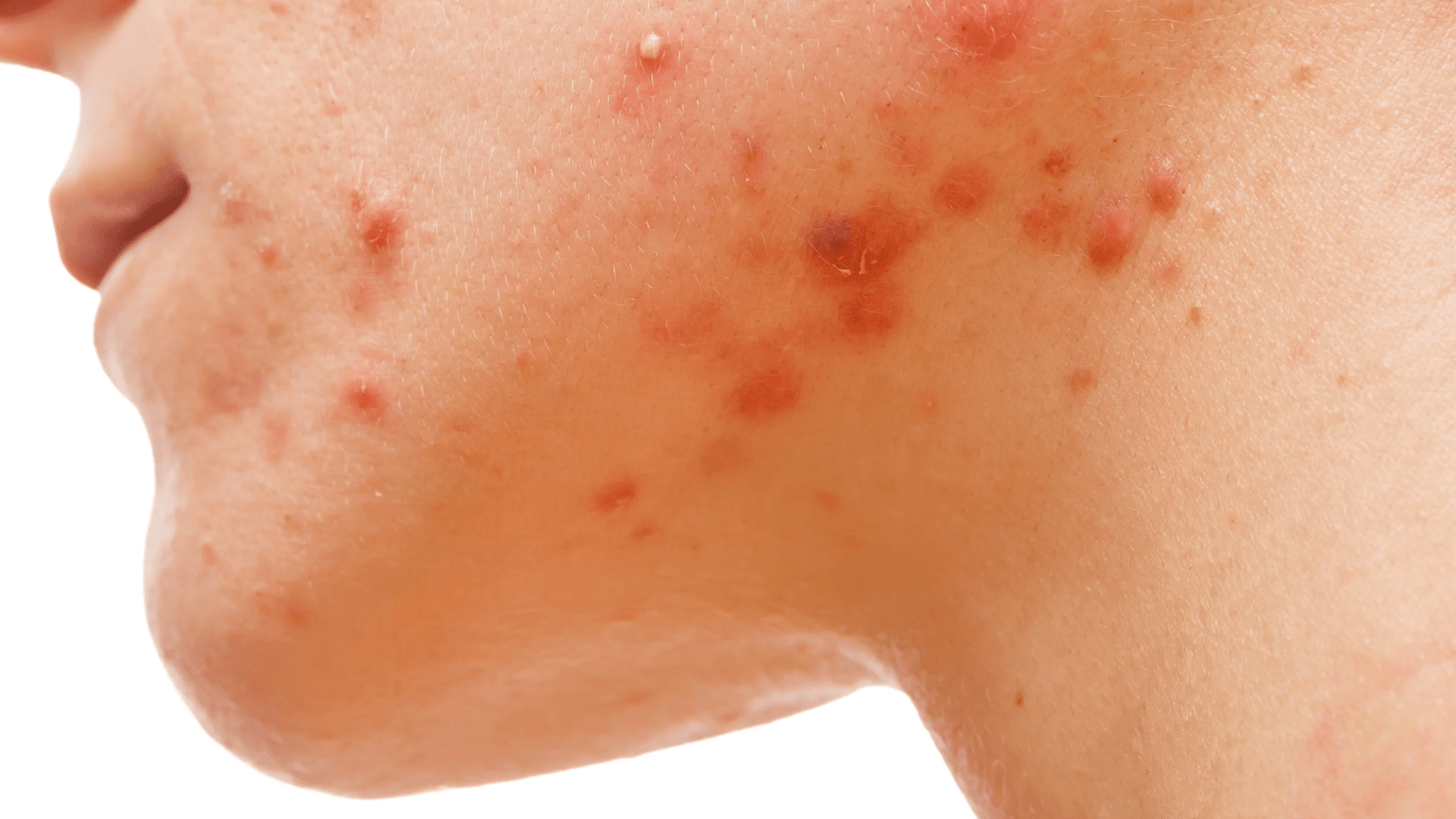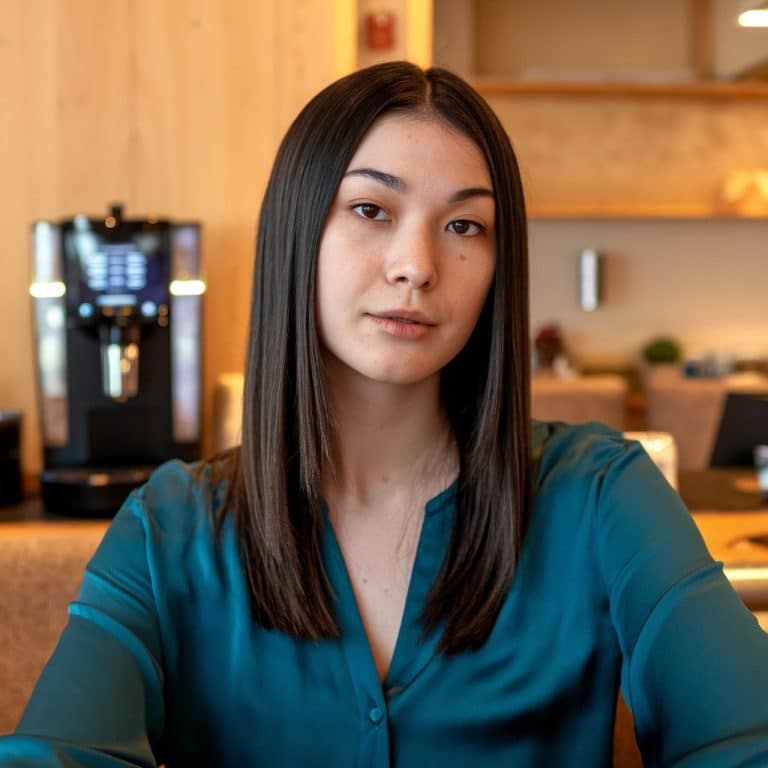You want better skin, but suddenly you’re dealing with more breakouts than before. Your face looks worse, not better.
You wonder if you made a terrible mistake choosing retinol.
This blog will explain whether retinol can cause acne, how to tell the difference between purging and real breakouts, and what you can do to minimize any initial skin problems.
You’ll learn when to stick with retinol and when to stop.
What Does Retinol do for Your Skin?
Retinol works by speeding up skin cell turnover.
This means old, damaged cells shed faster while new ones form underneath. The process helps smooth fine lines and wrinkles over time.
It also unclogs pores by preventing dead skin cells from building up inside them.
This is why retinol helps with blackheads and whiteheads. Plus, it can fade dark spots and improve skin texture.
However, retinol makes skin more sensitive to sunlight. Users need to wear sunscreen daily.
But the question is, does retinol cause acne? still stand, let’s learn about it,
Can Retinol Cause Acne?
Retinol doesn’t directly cause acne to form on your skin. However, it can sometimes irritate your skin during the first few weeks of use.
This irritation may look similar to breakouts. You might notice redness, dryness, or small bumps.
These reactions happen because your skin needs time to adjust to retinol. The ingredient speeds up cell turnover, which can temporarily overwhelm sensitive skin.
If you experience irritation, try using retinol less frequently.
Start with once or twice a week, then slowly increase usage as your skin builds tolerance.
Does Retinol Cause Purging?
Yes, retinol often causes purging when people first start using it. This happens because retinol speeds up skin cell turnover dramatically.
Purging brings existing clogs to the surface much faster than normal. These clogs were already forming deep in pores, but would have taken weeks or months to appear naturally.
Retinol pushes them out quickly, creating temporary breakouts.
The purging process typically lasts 4-6 weeks.
Breakouts usually occur in areas where someone normally gets acne. If pimples appear in completely new spots, it might be irritation rather than purging.
Most people see clearer skin after the purging period ends.
Signs of A Retinol Purge

Knowing how to identify a retinol purge helps you stay on track with your skincare routine.
These specific signs indicate your skin is adjusting normally to retinol treatment.
1. Texture Changes
Your skin might feel rougher or bumpier than usual during the first few weeks. This happens because dead skin cells are shedding faster, creating temporary texture issues before revealing smoother skin underneath.
2. Redness and Irritation
Mild redness around your face is common when starting retinol. Your skin becomes more sensitive as it adjusts to increased cell turnover.
This irritation typically decreases as your skin builds tolerance.
3. Flaking and Peeling
Small patches of skin may start flaking or peeling, especially around your nose and mouth.
This occurs because retinol accelerates the natural shedding process, removing old skin cells more quickly than normal.
4. Increased Breakouts
You might notice more pimples and blackheads appearing during the first month.
These breakouts represent existing clogs being pushed to the surface faster, not new acne formation from retinol itself.
5. Clustering of Blemishes
Breakouts during purging often appear in groups or clusters rather than scattered randomly.
This pattern happens because retinol affects multiple pores in the same area simultaneously, creating concentrated problem spots.
6. Localized Reaction
Purging typically occurs in areas where you normally break out, like your T-zone or chin. If new breakouts appear in places you’ve never had acne, it might indicate irritation instead.
7. Increased Oil Production
Your skin might produce more oil initially as it tries to compensate for retinol’s drying effects.
This temporary increase in sebum production usually balances out after several weeks of consistent use.
Acne Breakout vs Retinol Purge: The Difference
The difference between regular acne and retinol purging helps you make better skincare decisions.
The following is a clear comparison to help you identify what’s happening to your skin.
| Aspect | Acne Breakout | Retinol Purge |
|---|---|---|
| Timing | Can occur anytime | Starts within 2-4 weeks of beginning retinol |
| Duration | Varies, can be ongoing | Typically lasts 4-6 weeks, then improves |
| Location | It can appear anywhere on the face | Usually, in areas where you normally break out |
| Pattern | Random or scattered | Often appears in clusters or groups |
| Type of blemish | Mix of whiteheads, blackheads, cysts | Mostly whiteheads and blackheads |
| Skin texture | May or may not change | Often rough or flaky around breakouts |
| Response to treatment | May worsen with the wrong products | Improves with consistent retinol use |
| Overall skin condition | Other areas may also have issues | The rest of the skin often looks better over time |
| Cause | Hormones, diet, stress, products | Accelerated cell turnover from retinol |
| What to do | Adjust routine, see dermatologist | Continue retinol, use gentle products |
How Long Does Retinol Purge Last?
The retinol purging phase doesn’t last forever, which is great news for anyone dealing with temporary breakouts.
Most people see improvement within a specific timeframe, though individual experiences can vary.
- Typical duration is 4-6 weeks: Most users experience purging for about a month to six weeks before seeing clearer skin
- Peak occurs around week 2-3: The worst breakouts usually happen during the second or third week of retinol use
- Gradual improvement follows: After the peak, skin slowly starts clearing up with fewer new breakouts appearing each week
- Complete clearing by week 8: Nearly all purging should be finished within two months of starting retinol treatment
- Faster results with lower concentrations: Starting with weaker retinol products may reduce purging time, but extend the overall improvement timeline
- Slower process for sensitive skin: People with naturally sensitive skin might experience longer purging periods, but gentler symptoms
- Individual factors matter: Age, skin type, and previous skincare routine all influence how long your personal purging phase lasts.
Can You Avoid Purging?

Purging cannot be completely avoided, but you can minimize its severity.
Starting with a low concentration of retinol helps reduce intense reactions. Begin with 0.25% or 0.3% strength products instead of jumping to higher percentages.
Using retinol every third night initially allows your skin to adjust gradually. After two weeks, increase to every other night, then daily use.
Proper moisturizing and gentle cleansing during the adjustment period also helps. Some people experience minimal purging by following this slow introduction method.
However, people with many existing clogs will likely experience some purging regardless of the precautions taken
How to Treat Skin Purging from Retinol
Managing retinol purging properly helps minimize discomfort and speeds up the adjustment process.
These treatment strategies can make the purging phase more tolerable while protecting your skin barrier.
- Use the sandwich method: Apply moisturizer, then retinol, then another layer of moisturizer to reduce irritation and dryness
- Start with lower frequencies: Begin using retinol every third night, then gradually increase to every other night as skin adjusts
- Keep your routine simple: Avoid adding new products or harsh ingredients while your skin is purging to prevent additional irritation
- Apply gentle moisturizers: Use fragrance-free, basic moisturizers twice daily to maintain skin hydration and repair the protective barrier
- Never skip sunscreen: Apply broad-spectrum SPF 30+ every morning since retinol makes skin more sensitive to UV damage
- Avoid picking or squeezing: Resist touching breakouts to prevent scarring and bacterial infections that can worsen the purging process
- Consider buffering products: Mix retinol with a gentle serum or use products specifically designed to minimize retinoid irritation
- Stay consistent but patient: Continue your routine without stopping unless you experience severe reactions that indicate true irritation rather than purging
When to Contact a Dermatologist
Contact a dermatologist if your skin shows severe reactions beyond normal purging.
Signs include intense burning, widespread redness that doesn’t improve after a week, or deep cystic acne in new areas.
You should also seek help if purging continues past 8 weeks or gets progressively worse instead of better. Severe peeling, open wounds, or signs of infection require immediate professional attention.
If you’re unsure whether you’re experiencing purging or allergic reactions, schedule a consultation.
Dermatologists can recommend prescription alternatives or adjust your retinol routine safely.
They might also prescribe additional treatments to help manage the adjustment period more comfortably.
Which Retinols are People Loving?
The Reddit thread on the best retinol products shows diverse user favorites highlighting effectiveness, gentleness, and affordability.
A user shares positive experiences with Medik8’s Crystal Retinal 3, noting its gentle, non-greasy texture. They state, “Medik8 Crystal Retinal 3 has been great so far, really gentle but effective.”
Other products mentioned include The Ordinary’s Retinol variants, praised for affordability and results, and Paula’s Choice 1% Retinol Booster, highlighted for skin smoothing.
A user also mentions Sunday Riley’s A+ High-Dose Retinoid Serum for visible anti-aging effects.
Note: Tretinoin should be bought only after the recommendation of a dermatologist.
To Wrap Up
So, can retinol cause acne? It doesn’t cause true acne, but it can trigger temporary purging that looks similar to breakouts.
This process is your skin’s way of clearing out existing problems faster than usual.
Most people experience purging for 4-6 weeks before seeing significant improvements.
Remember the sandwich method, stay consistent with sunscreen, and keep your routine simple.
If symptoms persist beyond 8 weeks or seem severe, don’t hesitate to consult a dermatologist.


